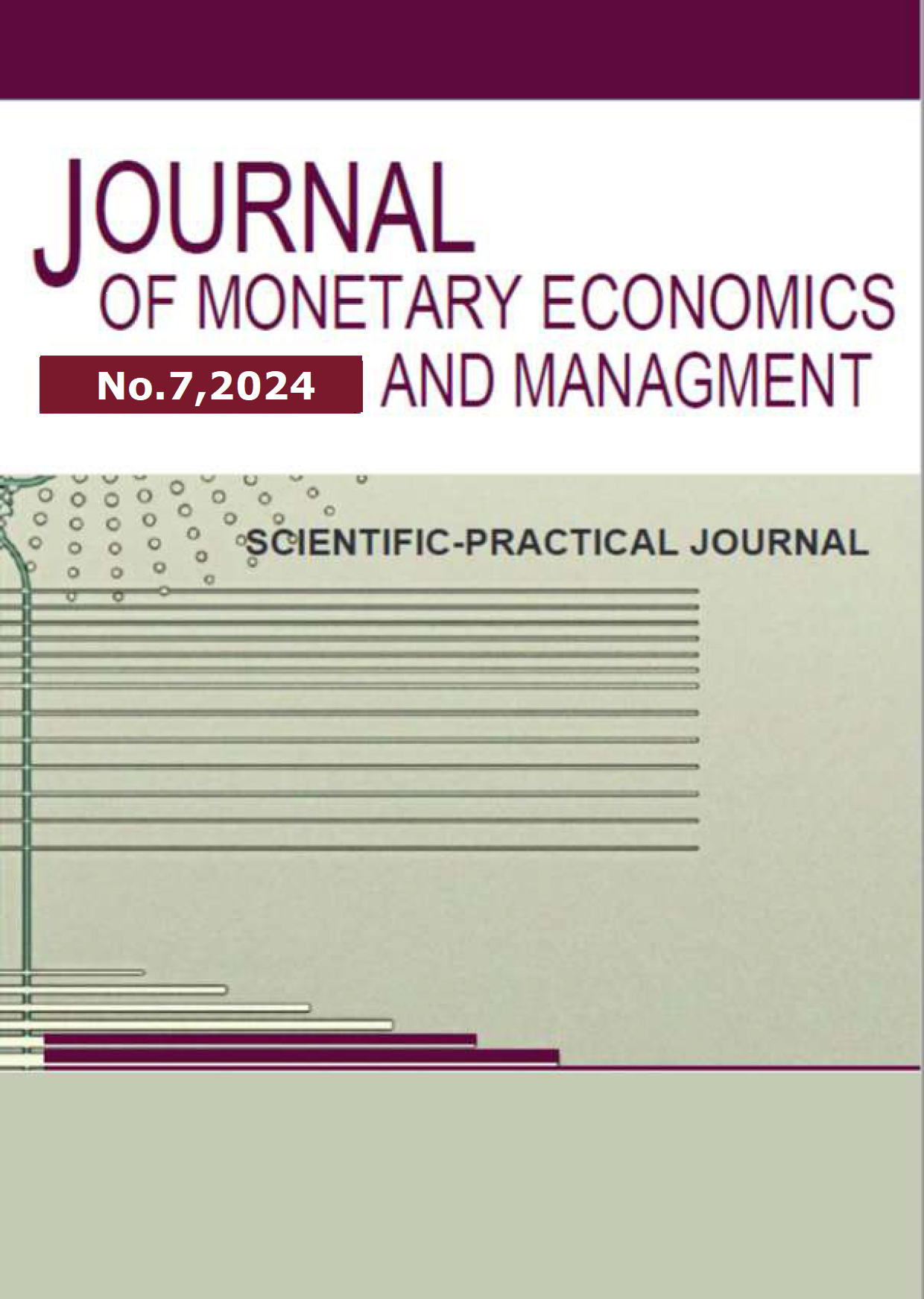employee
Russian Federation
employee
Russian Federation
The article is devoted to the problem of rationing of recreational loads on natural complexes. Ensuring the sustainable use of natural resources of the Arctic, minimizing the impact of recreational activities on the environment and ensuring the long-term preservation of unique ecosystems of this region are important conditions for the active tourist development of the Arctic zone of the Russian Federation. The relevance of the study is related to the insufficient methodological support of rationing of permissible recreational loads in Arctic ecosystems. The authors assessed the possibility of applying the current rules for calculating the maximum recreational capacity of specially protected natural areas of regional significance on the example of the Murmansk region.
Arctic zone of the Russian Federation (AZRF), tourism, recreation, recreational capacity, natural complex, ecosystem, protected natural areas (PNA)
1. Astanin D. M. Institucional'nye faktory razvitiya ekologicheskogo turizma / D. M. Astanin. – Tekst : neposredstvennyy // Geopolitika i ekogeodinamika regionov. – 2021. – T. 7 (17), Vyp. 2. – S. 128 – 145.
2. Vishnyakov N. V. Monitoring turistsko-rekreacionnoy deyatel'nosti osobo ohranyaemyh prirodnyh territoriy kak effektivnyy indikator prognoziruemogo razvitiya turistskih territoriy / N. V. Vishnyakov, O. Yu. Zelenskaya. – Tekst : neposredstvennyy // Yug Rossii: ekologiya, razvitie. – 2018. – T.13, N4. – C.119 – 128. DOIhttps://doi.org/10.18470/1992-1098-2018-4-119-128
3. Vremennaya metodika opredeleniya rekreacionnyh nagruzok na prirodnye kompleksy pri organizacii turizma, ekskursiy, massovogo povsednevnogo otdyha i vremennye normy etih nagruzok. M.: Izd-vo Goskomlesa SSSR, 1987, – 35 s. – Tekst : neposredstvennyy.
4. Gaynanova R. I. Berdvotching kak napravlenie razvitiya turizma na OOPT Murmanskoy oblasti / R. I. Gaynanova, E. O. Potorochin. – Tekst : neposredstvennyy. Problemy razvitiya industrii turizma: sbornik statey V Vserossiyskoy s mezhdunarodnym uchastiem nauchno-prakticheskoy konferencii. 2019. – S. 112 – 117.
5. Dyukova L. A. Opredelenie rekreacionnoy emkosti i fakticheskogo ispol'zovaniya parkovyh territoriy sanatorno-kurortnogo kompleksa «Forosskiy» (Ukraina) / L. A. Dyukova, M. T. Serikov. – Tekst : neposredstvennyy // Sovremennye problemy nauki i obrazovaniya. – 2012. – № 2; URL: https://science-education.ru/ru/article/view?id=5973
6. Ekologicheskaya emkost' turistskih territoriy: podhody k ocenke, indikatory i algoritmy rascheta / D. Yu. Zemlyanskiy, O. A. Klimanova, O. A. Illarionova, E. Yu. Kolbovskiy. Vserossiyskaya akademiya vneshney torgovli Minekonomrazvitiya Rossii. M. : VAVT, 2020. – 120 s. – Tekst : neposredstvennyy.
7. Klimanova O. A. Koncepciya ekologicheskoy emkosti: sovremennoe soderzhanie i algoritm ocenki dlya raznyh tipov turistskih territoriy / O. A. Klimanova, E. Yu. Kolbovskiy, O. A. Illarionova, D. Yu. Zemlyanskiy. – Tekst : neposredstvennyy // Vestnik Sankt-Peterburgskogo gosudarstvennogo universiteta. Nauki o Zemle. 2021. – № 66, vyp. 4. – S. 806 – 830. DOIhttps://doi.org/10.21638/spbu07.2021.409
8. Luk'yanova, Yu. A. Vliyanie rekreacionnyh nagruzok na izmenenie rastitel'nogo pokrova lesnyh cenozov nacional'nogo parka «Nizhnyaya Kama» v usloviyah differencirovannogo rezhima ohrany territorii / Yu. A. Luk'yanova, N. A. Chizhikova. – Tekst : neposredstvennyy // Samarskaya Luka: problemy regional'noy i global'noy ekologii. – 2009. – T. 18, № 3. – S. 74–83.
9. Makarova V. N. Uchet popravochnyh faktorov dlya predotvrascheniya degradacii prirodnoy sredy pri raschete rekreacionnoy emkosti na osobo ohranyaemyh prirodnyh territoriyah / V. N. Makarova, D. S. Zashkina, I. V. Isaeva. – Tekst : neposredstvennyy // Vestnik Vladivostokskogo gosudarstvennogo universiteta. 2023. – T. 15, № 1. – S. 76 – 86. DOIhttps://doi.org/10.24866/VVSU/2949-1258/2023-l/076-086.
10. Makarova V. N. Predotvraschenie degradacii prirodnoy sredy pri razvitii ekologicheskogo turizma na osobo ohranyaemyh prirodnyh territoriyah / V. N. Makarova, V. E.Myshko, E. I. Golokova. – Tekst : neposredstvennyy // Vestnik Vladivostokskogo gosudarstvennogo universiteta ekonomiki i servisa. 2022. – T. 14, № 2. – S. 9 – 19. DOIhttps://doi.org/10.24866/VVSU/2073-3984/2022-2/009-019.
11. Ob utverzhdenii Tipovyh pravil rascheta predel'no dopustimoy rekreacionnoy emkosti osobo ohranyaemyh prirodnyh territoriy regional'nogo i mestnogo znacheniya pri osuschestvlenii turizma : Postanovlenie Pravitel'stva Rossiyskoy Federacii № 1809 ot 31 oktyabrya 2023
12. Ob utverzhdenii Pravil rascheta predel'no dopustimoy rekreacionnoy emkosti osobo ohranyaemyh prirodnyh territoriy federal'nogo znacheniya pri osuschestvlenii turizma : Postanovlenie Pravitel'stva Rossiyskoy Federacii № 1811 ot 31 oktyabrya 2023
13. OST 56-100-95. Metody i edinicy izmereniya rekreacionnyh nagruzok na lesnye prirodnye kompleksy.
14. Plotnikova V. S. Rekreacionnaya emkost' kak organizacionno-ekonomicheskiy instrument razvitiya ekologicheskogo turizma na osobo ohranyaemoy prirodnoy territorii / V. S. Plotnikova, A. V. Vasil'eva. – Tekst : neposredstvennyy // Ekonomicheskie otnosheniya. – 2019. – Tom 9. – № 3. – S. 2191 – 2202. DOIhttps://doi.org/10.18334/eo.9.3.40950
15. Buckley R. An ecological perspective on carrying capacity // Annals of Tourism Research, 1999. – №26. – P. 705 – 708. DOIhttps://doi.org/10.1016/S0160-7383(99)00013-4
16. Ceballos-Lascurain H. Tourism, ecotourism, and protected areas: the state of nature-based tourism around the world and guidelines for its development. Cambridge: IUCN, 1996. – P. 5583.
17. Cole D. N., Monz C. A. Spatial patterns of recreation impact on experimental campsites. Journal of Environmental Management, 2004. – № 70. – P. 73 – 84. DOIhttps://doi.org/10.1016/j.jenvman.2003.10.006
18. Duinker P. N., Burbidge E. L., Boardley S. R., Greig L. A. Scientific dimensions of cumulative effects assessment: toward improvements in guidance for practice // Environmental Reviews. 2012. – 21 (1). – P. 40 – 52. DOIhttps://doi.org/10.1139/er-2012-0035. ISSN 1181-8700
19. Lanuza R. L., Tura C. M., Carreon B. O., Aurestila A. M., Fortich A. D. Carrying capacity assessment of nature-based ecotourism in Magsaysay Park and Logarita Spring, Riverside, Bilar, Bohol, Philippines: The integration of carrying capacity and vulnerability assessment // Sylvatrop, The Technical Journal of Philippine Ecosystems and Natural Resources 2023. – №31 (2). – P. 43 – 70
20. Lin, P.-Ch., Huang, J.-Ch., Ho, P.-T. Improved multi-level fuzzy integrated assessment algorithm for tourism environment carrying ability based on cloud model. // Journal of Intelligent & Fuzzy Systems, 2023. – 45(4). – P. 1-11. DOIhttps://doi.org/10.3233/JIFS-232982
21. McCool S. Limits of Acceptable Change and tourism. In: The Routledge Handbook of Tourism and the Environment. Taylor and Francis Inc., 2012. – P. 285 – 298. DOIhttps://doi.org/10.4324/9780203121108.ch27
22. O’Reilly A. M. Tourism carrying capacity. Concepts and issues. Tourism Management. 1998. – №7. – 254 – 258. DOIhttps://doi.org/10.1016/0261-5177(86)90035-X.
23. Vandarakis D., Malliouri D., Petrakis S., Kapsimalis V., Moraitis V., Hatiris G.-A., Panagiotopoulos I. Carrying Capacity and Assessment of the Tourism Sector in the South Aegean Region, Greece. Water 2023. – №15. – P. 2616. DOIhttps://doi.org/10.3390/w15142616
24. Yakovchuk A. A. 2020. Tourism industry development issues in the Arctic zone of the Russian Federation. Arktika i Sever [Arctic and North], 2020. – № 38. – P. 55–72. DOIhttps://doi.org/10.37482/issn2221-2698.2020.38.56.
25. Yuxi Z., Linsheng Zh., Wang L., Hu Y. Measuring the conflict tendency between tourism development and ecological protection in protected areas: A study on National Nature Reserves in China // Applied Geography. 2022. – №142 (2). – P. 102690. DOIhttps://doi.org/10.1016/j.apgeog.2022.102690 URL https://www.researchgate.net/publication/359905611_Measuring_the_conflict_tendency_between_tourism_development_and_ecological_protection_in_protected_areas_A_study_on_National_Nature_Reserves_in_China









